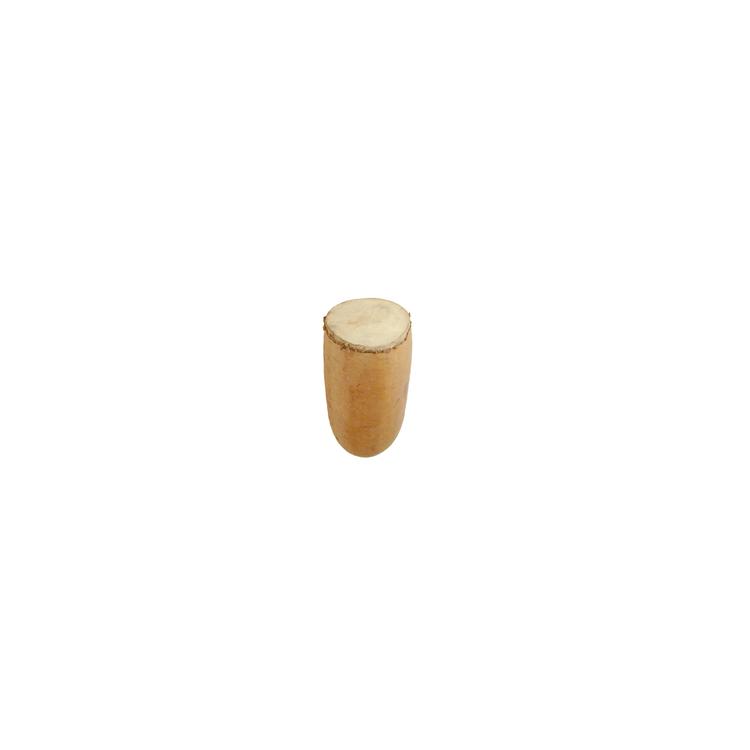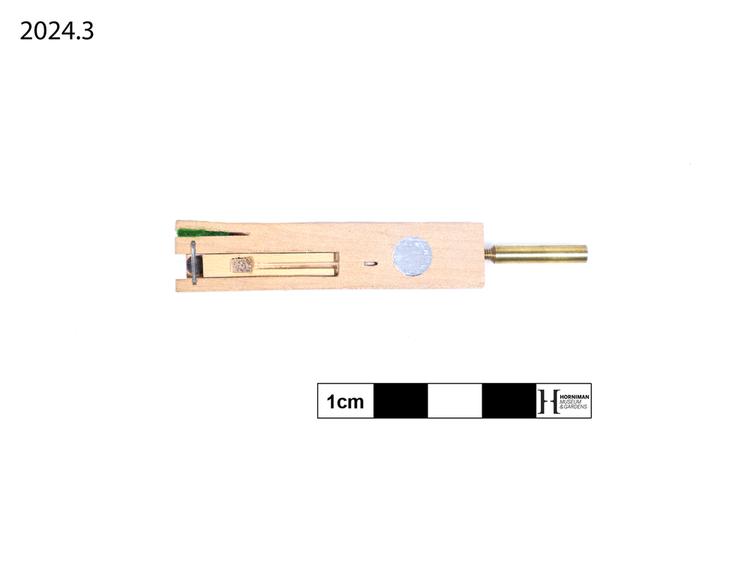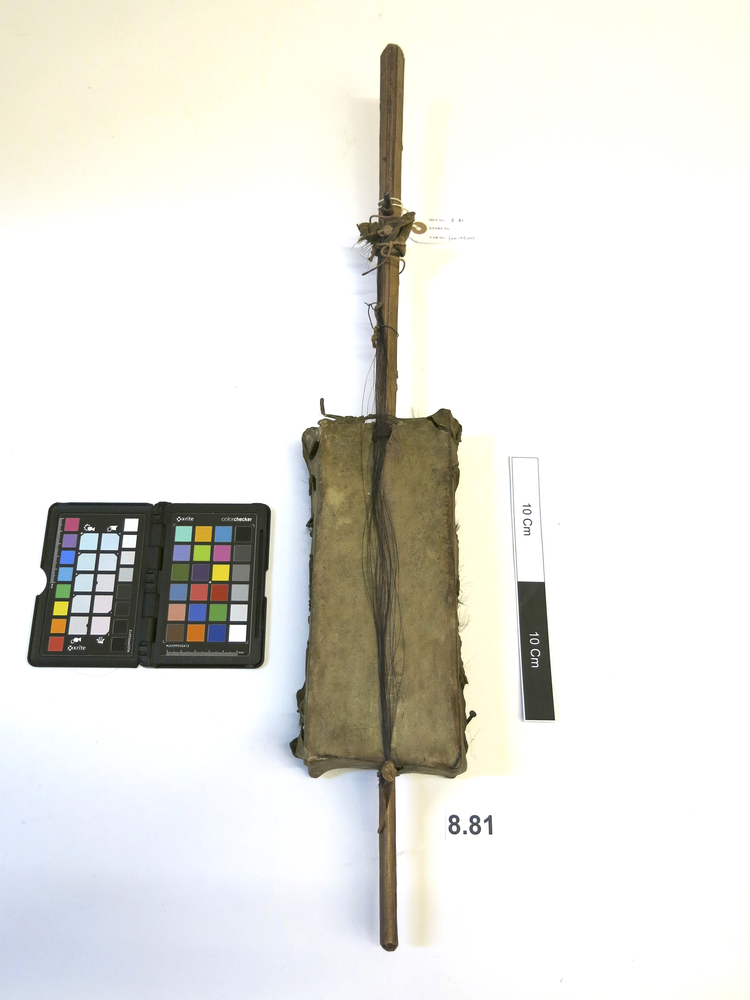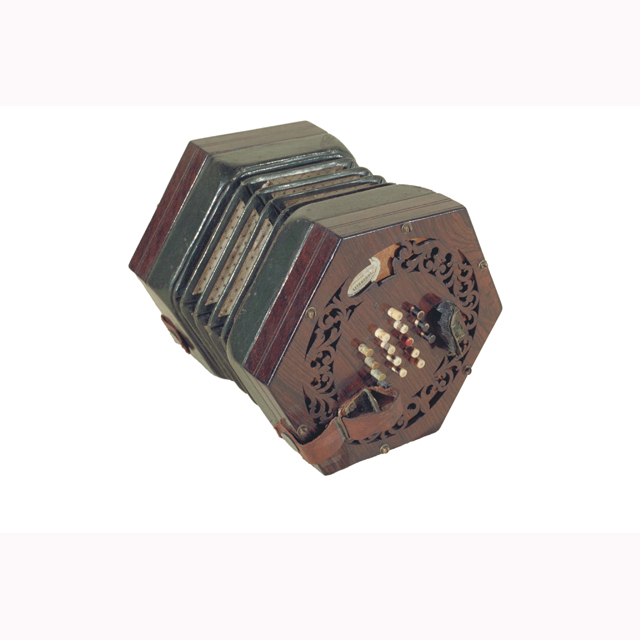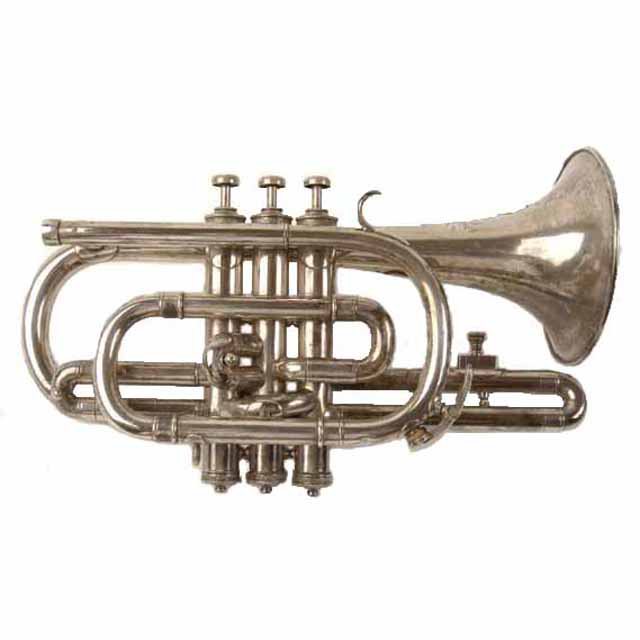
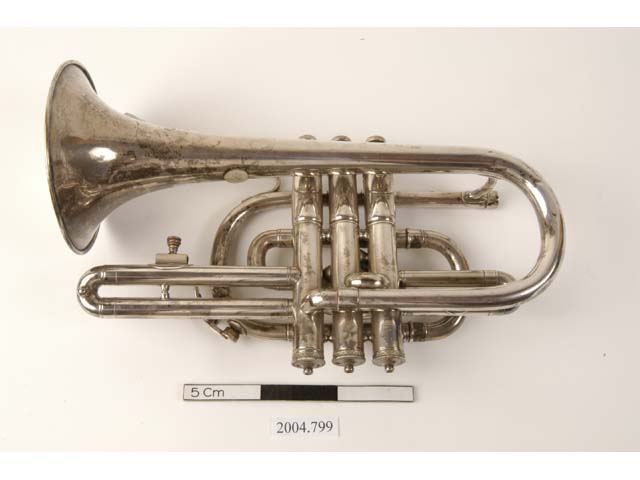
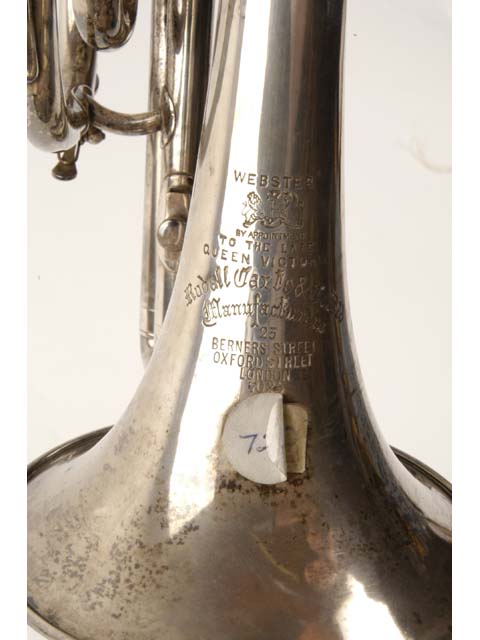
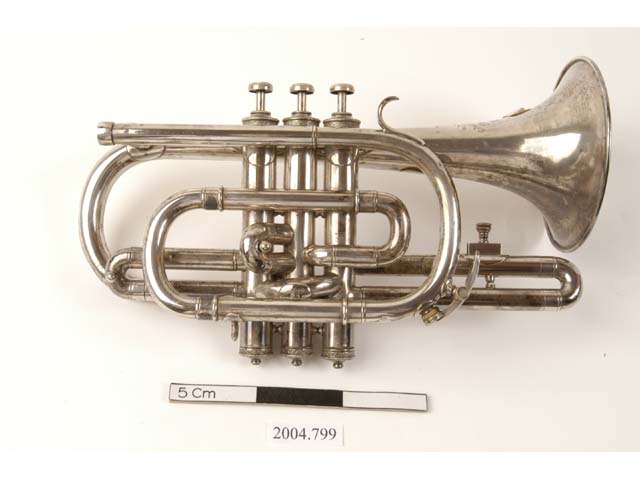
Cornet in B - flat.Silver plated brass. Three Périnet valves. The instrument employs the Webster Patent Conical Bore system whereby the bore profile through the valve block is conical rather than cylindrical. This necessitates an extra tube to connect the first and third valves. Socket for music card holder on third valve loop. Mouthpiece missing. Stamp on bell reads: WEBSTER/BY APPOINTMENT/TO THE LATE/QUEEN VICTORIA/Rudall Carte & Co. ltd/Manufacturers/23/BERNERS STREET/OXFORD STREET/LONDON/7025. Lion and unicorn royal emblem also appears on the bell. Central sections of valve casings are stamped 22, 23 and 24 respectively.
The distinctive tone produced by a cornet is largely due to the instrument's conical bore. This means that the tubing gradually increases in width from the mouthpiece to the bell. However, the valve section usually disrupts this progression and brings cylindrical tubing into play, which can affect the instrument's timbre. In the early part of the 20th century, many instrument makers experimented with systems for continuing the conical expansion of the tubing through the valves. The Webster system employed on this cornet was among the most successful.




